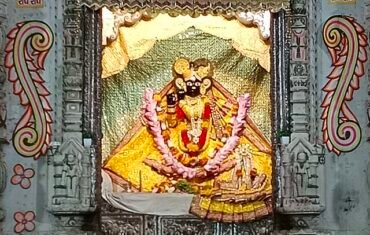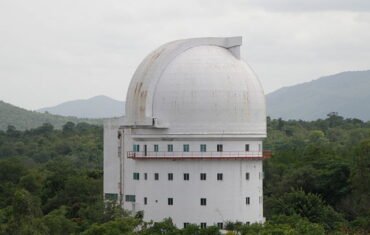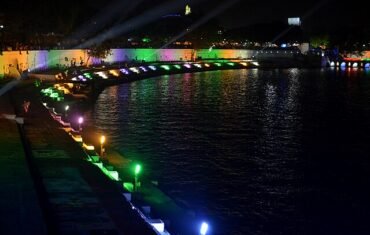Dilkusha Kothi is the remains of an 18th-century house built in the English baroque style in the quiet Dilkusha area of Lucknow, the capital city of Uttar Pradesh, India. The house was originally intended as a hunting lodge and a summer resort for the Nawabs of Oudh, the rulers of the region. However, the house was severely damaged during the Indian Rebellion of 1857, when it was used as a military base by the British forces. Visit during One Day Lucknow Sightseeing Trip By Private cab
Today, only a few towers and external walls stand as a monument, though the extensive gardens remain. The house is a witness to the history and culture of Lucknow and its erstwhile rulers.
Location of Dilkusha Kothi

Dilkusha Kothi is located in the cantonment area of Lucknow, near the banks of the Gomti River, which is a tributary of the Ganges. The house is about 8 km from the Lucknow Railway Station and 14 km from the Chaudhary Charan Singh International Airport. The house is easily accessible by public transport, such as buses, taxis, auto-rickshaws, and cycle-rickshaws. The house is also close to other tourist attractions in Lucknow, such as Bara Imambara, Rumi Darwaza, Chota Imambara, British Residency, and Janeshwar Mishra Park.
Timing and Entry Fees of Dilkusha Kothi

Dilkusha Kothi is open to visitors from 7 am to 6 pm every day, except on Mondays and public holidays. The entry fee for Indian nationals is Rs. 5 per person, while for foreign nationals it is Rs. 100 per person. There is no fee for children below 15 years of age and senior citizens above 65 years of age. There is also no fee for using a camera or a video camera inside the premises.
Things to Do and Must See in Dilkusha Kothi

Dilkusha Kothi is a must-visit place for anyone who loves history, architecture, and nature. There are many things to do and see inside the premises, such as:
- The Ruins: The main attraction of Dilkusha Kothi is the ruins of the house, which are a testimony to its former glory and grandeur. The house was built in the English baroque style by Major Gore Ouseley, a British resident and a friend of Nawab Saadat Ali Khan, in the early 1800s. The house had patterned walls and no inner courtyard, unlike the traditional Indian architecture. The house also had four doors that led to a gallery that displayed various statues and paintings. The house was modeled on Seaton Delaval Hall in Northumberland, England, which was designed by Sir John Vanbrugh, who also designed Blenheim Palace. The house was later modified by Nawab Nasir-ud-Din Haider, who added more decorations and features.
- The Gardens: The gardens surrounding the house are another attraction of Dilkusha Kothi. The gardens are well-maintained and have various plants and trees that create a serene and green environment. The gardens also have fountains and lights that enhance their beauty at night. The gardens are a perfect place to relax and enjoy nature.
- The Museum: The museum inside the premises showcases various artifacts and relics related to the history and culture of Lucknow and Oudh. It displays weapons, coins, paintings, photographs, manuscripts, pottery, costumes, jewelry, and other items that belong to different periods and dynasties. The museum also has a section dedicated to the Indian Rebellion of 1857, which depicts the role and impact of Dilkusha Kothi in the uprising.
Significance of Dilkusha Kothi

Dilkusha Kothi is not only a monument of historical and architectural importance but also a place of cultural and political significance. It was built by Nawab Saadat Ali Khan as a symbol of his friendship and alliance with the British. It was also used as a place of recreation and entertainment by the Nawabs of Oudh and their guests. However, during the Indian Rebellion of 1857, the house was occupied by the British forces under Sir Colin Campbell, who used it as a strategic base to recapture Lucknow from the Indian rebels.
The house was shelled and bombarded by both sides during the siege and suffered extensive damage. The house also witnessed the death of General Sir Henry Havelock , who died of dysentery at Dilkusha on 24 November 1857. The house is a reminder of the glory and tragedy of Lucknow and its erstwhile rulers.
FAQ’s
Q: How long does it take to visit Dilkusha Kothi?
A: It depends on your interest and pace, but generally it takes about an hour to explore the premises.
Q: Is there a dress code for visiting Dilkusha Kothi?
A: There is no strict dress code, but it is advisable to wear modest and comfortable clothes that cover your shoulders and knees.
Q: Is there a locker facility for storing valuables at Dilkusha Kothi?
A: No, there is no locker facility available at the premises. You are advised to carry only essential items and keep them with you at all times.
Q: Is there a cafeteria or restaurant at Dilkusha Kothi?
A: No, there is no cafeteria or restaurant inside the premises, but there are many eateries and street food stalls outside the premises where you can enjoy the famous Lucknowi cuisine.
Q: Is photography allowed inside Dilkusha Kothi?
A: Yes, photography is allowed inside the premises, but you need to respect the sentiments and privacy of other visitors and staff. You should also avoid using flash or tripod near the ruins and monuments.
Conclusion
Dilkusha Kothi is a must-see attraction for anyone who visits Lucknow. It is a masterpiece of architecture and engineering that showcases the rich history and culture of Lucknow and Oudh. It is also a place of nostalgia and emotion that reflects the spirit of humanity and courage. Dilkusha Kothi is a monument that will leave you spellbound and amazed by its beauty and story.










